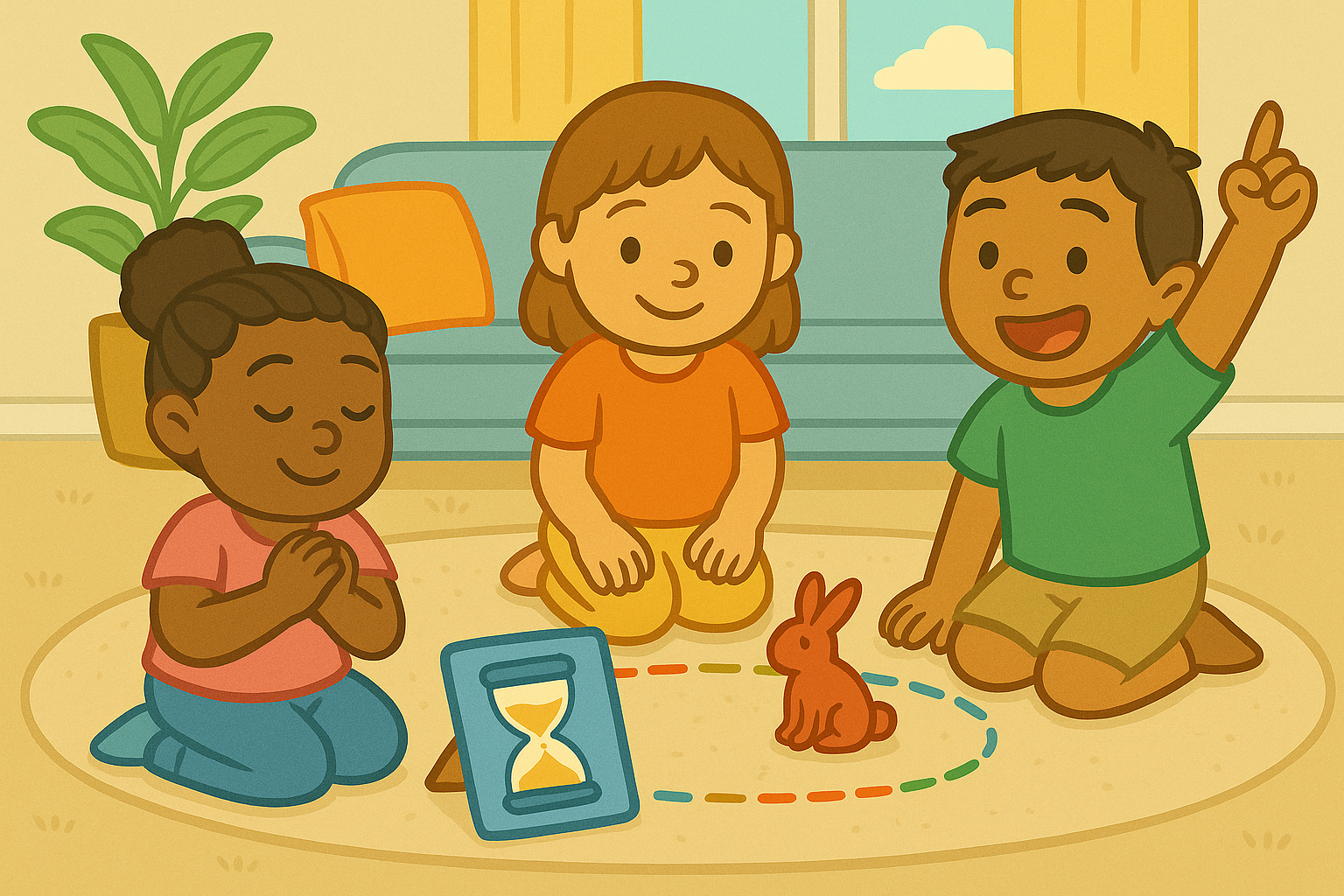Teaching Delayed Gratification Through Play
Teaching Delayed Gratification Through Play
Why Delayed Gratification Matters
The ability to wait — for a turn, for a reward, for something exciting — is one of the most important life skills a child can learn. Psychologists call it delayed gratification, and it’s strongly linked to emotional regulation, academic success, and even long-term happiness.
Children who can wait learn patience, problem-solving, and perseverance — the very traits that help them thrive in school and relationships later on.
This foundation echoes How to Build Self-Discipline in Young Kids, where self-control develops through small, consistent experiences of waiting and reflection.
The Science Behind Waiting
The classic “marshmallow test” showed that children who could delay gratification — resisting the urge to eat one marshmallow now for two later — tended to do better in life decades afterward.
But this isn’t about willpower; it’s about trust. Kids learn to wait when they know their environment is predictable and caregivers follow through.
This emotional trust aligns with The Role of Routine in Reducing Misbehavior, where consistency helps children feel secure enough to practice patience and restraint.
Why Play Is the Perfect Teacher
Play naturally builds self-control. Every game with turns, rules, or waiting teaches children that good things come after effort and cooperation.
Games like “Red Light, Green Light” or “Simon Says” teach impulse control in joyful ways. Pretend play — like waiting in line at a “pretend store” — builds similar emotional muscles.
This joyful learning mirrors Playful Parenting Techniques That Encourage Cooperation, where play transforms discipline into connection and growth.
Start with Instant Rewards, Then Stretch
Young children need small wins first. Start with short waits — “When we clean up toys, then we can read together.” Gradually increase the time between effort and reward.
You might use visual cues, like timers or countdowns, to help children see progress. Over time, this builds confidence in their ability to wait.
This gradual scaffolding echoes Encouraging Positive Behavior Through Routine, where structure turns small successes into long-term habits.
The Role of Predictability
Delayed gratification requires faith that the reward will come. If promises are inconsistent, kids lose motivation to wait. That’s why follow-through is crucial — when parents keep their word, children learn that patience pays off.
You might say:
“When we finish dinner, we’ll play your favorite game.”
“You waited so patiently — thank you! Now it’s time.”
This predictable pattern supports the principles in Setting Boundaries with Love and Consistency, where reliability builds emotional trust.
Using Everyday Opportunities to Practice Waiting
You don’t need fancy materials to teach delayed gratification — just everyday routines.
Try:
Waiting for everyone to sit before eating.
Letting the child count down before opening a gift.
Building anticipation before outings (“We’ll go after lunch”).
These small, daily moments turn ordinary life into an emotional classroom — a strategy also used in Teaching Cause and Effect Through Natural Outcomes, where real-life experiences become lessons in patience and choice.
Managing Frustration During Waiting
Learning to wait is hard — especially when emotions are big. A child’s first attempts may include whining or tears. The key is staying calm and empathetic:
“It’s hard to wait. I know you’re excited.”
“Let’s take deep breaths while we wait.”
When parents stay steady, children learn to regulate their own emotions through co-regulation. This practice connects deeply to The Role of Emotional Regulation in Discipline, where calm modeling shapes emotional growth.
Turning Waiting into a Game
Play makes patience fun. When waiting at a restaurant or in a grocery line, turn it into a mini game:
“Can we count how many red things we see before the food comes?”
“Let’s play ‘I Spy’ while we wait.”
By turning boredom into engagement, parents show that waiting isn’t a punishment — it’s a chance for creativity and togetherness.
This playful redirection mirrors Gentle Ways to Address Whining and Complaints, where connection defuses frustration and builds resilience.
Praise the Process, Not Just the Reward
When children wait patiently, celebrate their effort rather than the outcome. Say, “You waited so calmly!” instead of focusing only on the reward itself.
Praising the process teaches intrinsic motivation — the understanding that patience itself is valuable, not just what comes afterward.
This growth mindset approach ties beautifully to Positive Reinforcement vs. Bribery, where encouragement builds inner motivation instead of dependency on external rewards.
Building Emotional Awareness Around Waiting
Help children link waiting to emotional outcomes: “How did it feel when you finally got to play?” or “Was it worth the wait?”
These reflections deepen emotional insight and help kids recognize pride and accomplishment.
This reflective learning style is central to Helping Kids Reflect on Their Choices, where guided discussion turns everyday experiences into lasting emotional lessons.
From Patience to Perseverance
Delayed gratification isn’t just about waiting — it’s about persistence. Children who learn to wait calmly also learn to stick with challenges, manage disappointment, and trust themselves.
Over time, these lessons shape confidence: I can handle waiting. I can do hard things.
This lasting self-assurance echoes How to Discipline Without Shame, where gentle, consistent teaching empowers children to thrive with both confidence and kindness.
Teaching delayed gratification isn’t about withholding joy — it’s about helping children discover the satisfaction of earning it. Through play, routine, and trust, kids learn that patience leads to pride. Each moment of waiting becomes a small victory for self-control — a lesson that ripples into every corner of life, from playground friendships to future goals.
This content is for educational purposes and is not a substitute for professional medical or psychological advice.
Popular Parenting Articles


